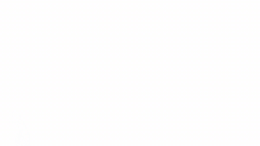 *
*
Review by Off the Shelf Correspondent Ed Meek
A creative literary take on the mystery novel
In Egypt when someone dies, relatives hire professional mourners to help the family and friends grieve. Jews sit shiva for seven days after the death of a close one. For many of us though, there is a funeral mass and service. Then, we are expected to get on with our lives. Alina Grabowski delves into the way women in a small town process the tragic death of a high school girl.
In an interview with a local journalist, Ali Goad, in Austin, Texas, Grabowski describes her novel as exploring “how a community processes a tragedy … focusing on “the

Women and Children First
By Alina Grabowski
Zando Books, New York
320 pages. $16.99.
complexities of memory.” The novel is written from the points of view of ten women, each of whom gets her own chapter. The first five chapters lead up to and include the death of Lucy, a high school student, and the last five chapters deal with the aftermath. Each of the women has a connection to the main character. The chapters function like long short stories that are cleverly linked. Each chapter is a mini-mystery: who is this person and how is she linked to Lucy? The novel is a kind of giant puzzle with the pieces fitted together as you read along.
The advantage of novels with multiple points of view is that we are introduced to a number of characters rather than stuck with one voice. Although Holden Caufield of The Catcher in the Rye starts out as a very entertaining narrator, after a hundred pages, the reader begins to get sick of him calling everyone a phony. On the other hand, what happens with multiple points of view is that we find ourselves drawn to some characters more than others. Grabowski is a talented writer who creates the voices of a range of women, from teenagers to forty-something moms. However, she is more convincing with teens and young women than she is with the older ones.
Grabowski says that although the novel focuses on a mystery it is “primarily literary fiction.” As a result, the emphasis is on character, not plot. “Great character makes great fiction,” the writer Bill Kittredge once said and Grabowski is skilled at creating character. In her attempt to make the novel realistic, she often undercuts what would be climaxes in other novels. Grabowski often backs away from conflict giving us characters that are compelling but what happens is sometimes a letdown.
My favorite character is Mona, a caustic thirty-year-old who is living in the house her mother left her and working in a bar. She has great lines like: “If only I could look at everything in life and know its interior contents. I would have dated significantly fewer musicians.” Another strong character Marina describing a high school girl, says, “She smiles with the innocent menace teenage girls have been perfecting for centuries. What an age! To be so convinced of your allure and so ignorant of its consequences.” These are the kinds of insights that make fiction so enjoyable. Maureen, the principal of the high school says,” But a girl and a child are not the same. A child is a pet. A girl is prey.”
The characters all react differently to the death of Lucy. Many are trying to get away from the problems engendered by the tragedy. Two high school mates of hers literally run while her mother doesn’t want to face or even find out what really happened.
Grabowski has her thumb on the current zeitgeist with compelling women who each have power in their own world and who are often reacting to men who disappear or let them down.
There’s an embarrassing viral video that may have caused Lucy to take risks she might not otherwise have engaged in. The title, of course, is a reference to the Titanic. At the beginning of the book, an epigraph tells us that the only reason that they say “Women and children first” is to test the strength of the lifeboats. Alina Grabowski’s promising and well-written debut novel is well worth diving into.















Reader Comments